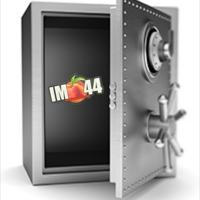The Indiana Birth Control League, later known as Planned Parenthood,
is founded in 1932 to help married women who have two or more
children plan for future children.
"Born of a need"
As the Great Depression tightened its grip on the United States, the money for "vulnerable" children became scarce. This made it difficult for the Indianapolis Orphans' Asylum to meet their needs. The director of the Children's Bureau, Lucille Batson, later recalled that the auxiliary to the asylum was "born of a need" to help the children.
The money raised by the auxiliary often went toward expanding a child's horizon of experience or alleviating a medical problem. Over the years, auxiliary funds were used for a variety of purposes, including music lessons and instruments, orthopedic shoes, summer camp, and an international exchange program visit. Some of the money raised provided scholarships for staff members to further their education through graduate study or for them to attend professional conferences.
The auxiliary has been active in other kinds of support for the Bureau as well. In 1939, the auxiliary began publishing the Reflector for foster parents, which became the official newsletter of the organization.
During World War II the auxiliary organized and operated a toy-lending library on East Market Street for childcare providers, in addition to its other war-related activities. By the 1960s the auxiliary volunteers helped in the Children's Bureau's office, interviewed prospective adoptive parents, and organized foster parents and foster child activities Over the years, the auxiliary continued to grow and respond to the changing needs of the Children's Bureau.
In 1992, the Children's Bureau merged with the Family Support Center, Inc. The Family Support Center had its own auxiliary, founded in April 1981 by Mrs. Carl M. Sauer. This auxiliary remains closely tied to the activities of the Family Support Center, providing volunteer service and fund-raising through various charity events. Still separate, the two auxiliaries continue to provide ongoing support that was "born of a need."
1941:
World War II begins. Meeting the "physical needs" of children is not enough, according to a statement released by the director of the asylum. "All our children needed individual attention and care." Institutional responsibility for the orphanage is transferred in October to the Protestant General Orphans' Home, 1404 South State Street. The orphanage building is sold, and the money is placed in an endowment fund. The Children's Bureau moves to the Odd Fellows building at the corner of Washington and Pennsylvania Streets in December.
Funds shrank for orphanages as the relief measures grew during the Great Depression. Responsibility for public child welfare cases was transferred to the Children's Division of the Marion County Department of Public Welfare. The responsiblity for orphanage care for the county's wards shifted to the Protestant General Orphan's Home in 1941.
1952:
The board indicates that the press has an indifferent attitude toward the work of the Children's Bureau, except in regard to the efforts of the auxiliary. However, a Carl Sandburg radio program gives the Bureau time to recruit foster parents. There are ongoing discussions with the board of the Suemma Coleman Home about having the Bureau assume responsibility for finding homes for infants born there.
1953:
The Children's Bureau moves to the new English Foundation Building.
1955:
Planned Parenthood offers services for unmarried women for the first time; its services have previously been restricted to married women with two or more children.
In 1955 orphans gathered for a performance at the General protestant Orphans' Home. In
1971 the name of the home changed to the Pleasant Run Children's Home.
1957:
The United Fund is established from the old Community Chest, and the Children's Bureau is a charter member.

